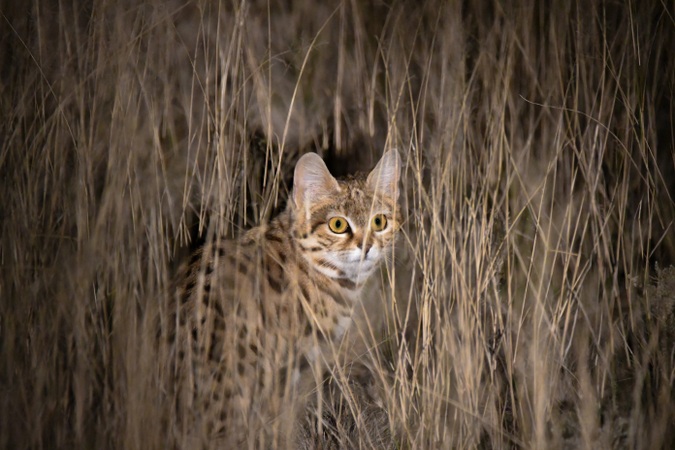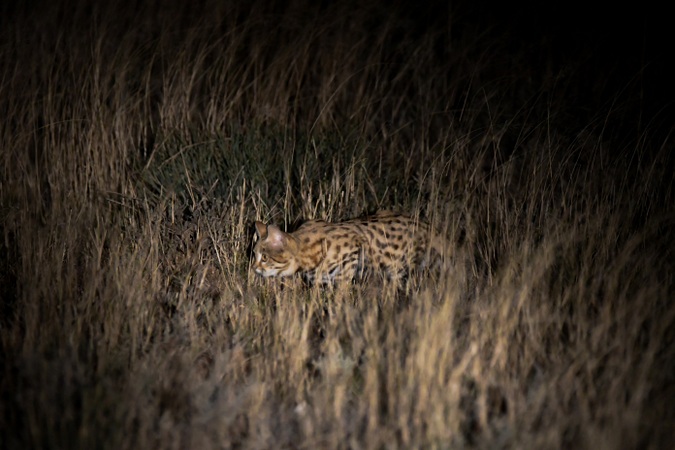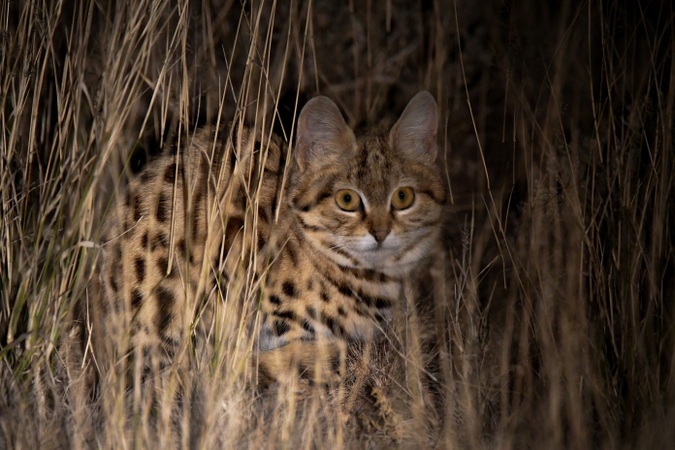
The black-footed cat (Felis nigripes) might weigh as much as a lion’s paw, but it is as vicious as the rest of the wild cat family. Here are 9 facts about the black-footed cat, also known as the small-spotted cat, that you need to know:
1. Even though this member of the genus Felis looks more like an adorable moggie, it is believed to be the world’s deadliest cat. They achieve the highest kill rate, successfully taking their target in 60% of hunts. Other wild cats often spotted on your African safari, such as lions and leopards, rarely succeed more than 20-40% of the time. (Read more on Africa’s 10 cat species here).
2. This tiny cat is perhaps the smallest of all wild cat species in Africa. The total length of its body is between 50-72 cm (including the tail). The male weighs between 1.7-2.4 kg while the female is only 1-1.6 kg. Kittens weigh a mere 60-90 g when born. They are so small that they do not even trigger conventional camera traps, making them difficult to study. For this reason, it is tricky for researchers to estimate the number of black-footed cats in the wild, but it is believed that there are less than 10,000 mature individuals in the wild, and that the population is declining. For these reasons, the black-footed cat is listed as ‘vulnerable’ on the IUCN Red List.

3. Sometimes walking more than 35km a night to find prey, the black-footed cat is an opportunistic hunter that takes anything it can overpower. Males can even take down hares or small bustards.
4. The black-footed cat is also solitary, with both sexes marking their territories by urinating.

5. These cute cats have pink skin, which is different from other wild cats, whose skin is usually dark tan to black.
6. The black-footed cat’s vision is six times better than that of humans, aided by enormous eyes. It’s also equipped with excellent night vision and impeccable hearing that can pick up even the tiniest sound – which is why they are easily disturbed and tricky to spot when on safari.
7. Despite its name, only the pads and underparts of the cat’s feet are black. Coat colouration ranges from reddish-fawn (in the southern parts of Africa) to a much paler colour further north. The chin and throat are white, with distinct dark bands on the throat, and a black-tipped tail. This description helps a lot when differentiating it from an African wildcat.

8. The black-footed cat can be found in parts of southern and central southern Africa, favouring arid to semi-arid scrub and short grassland, and open terrain close to rocky outcrops. (Check out our safaris to Southern Africa here).
9. This great hunter is predominantly nocturnal but occasionally crepuscular – which means it can be seen out of its den just after sunset and before sunrise (add this to your sighting list for your next African safari). During the day they rest either in burrows dug by other species, in hollow termite mounds or among rock tumbles. That’s where it gets its Afrikaans name from – miershooptier – which means anthill tiger.

To comment on this story: Login (or sign up) to our app here - it's a troll-free safe place 🙂.![]()







